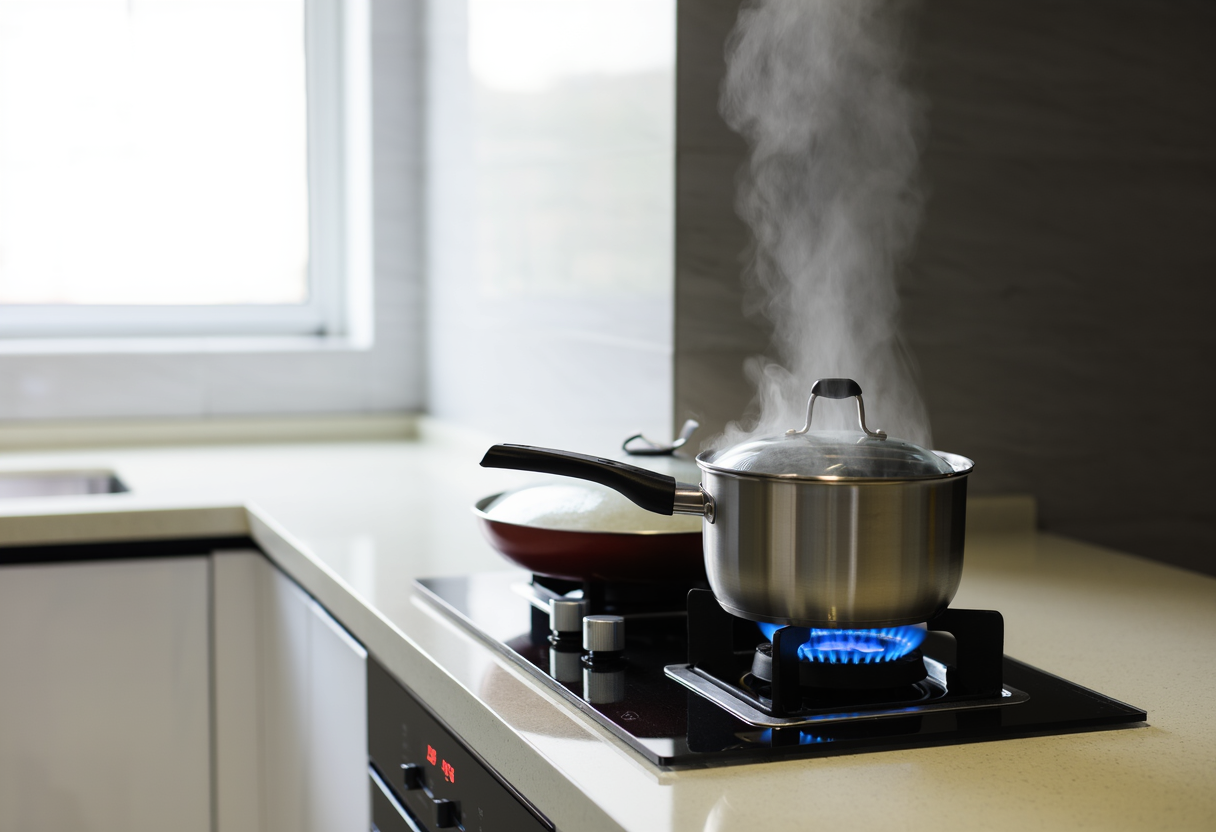Gas Stoves vs. Electric Stoves: Which Is the Best Choice for Your Kitchen?
Choosing between gas stoves and electric stoves is crucial for any homeowner. Both options offer unique advantages and drawbacks. Understanding the differences can enhance your cooking experience and help you make an informed decision that suits your needs. Learn the factors to consider before upgrading your kitchen appliance.
Understanding Gas Stoves and Their Unique Benefits
Gas stoves have long been a popular choice among professional chefs and home cooks alike. One primary reason for this preference is the immediacy of heat control that gas stoves provide. Unlike electric ranges, which can sometimes take time to reach the desired temperature, gas stoves allow for instant heating adjustments. Additionally, the flames generated by gas stoves offer visual cues for more intuitive cooking, which is particularly valuable for precision in culinary techniques. Furthermore, gas stoves are praised for their efficiency; they usually heat up pots and pans faster than their electric counterparts. Due to these factors, many consider gas stoves to be superior in providing a more enjoyable cooking experience. However, choosing gas stoves may also involve considerations regarding safety and installation, which can vary significantly based on household environments.
The Convenience of Electric Stoves in the Modern Kitchen
Electric stoves present a compelling alternative to gas stoves, particularly in urban areas where gas lines may not be as readily available. They come equipped with various features that enhance ease of use, such as induction cooktops that utilize magnetic fields for efficient heating. One of the defining attributes of electric stoves is their ease of cleaning; smooth cooktops can be wiped clean with minimal effort, unlike gas stoves, which often involve the hassle of disassembling grates. Moreover, modern electric stoves often include smart technology that can be integrated with home automation systems, improving convenience in everyday cooking. However, it's essential to consider that the cooking experience can vary widely with electric stoves due to factors like residual heat and slower heating times compared to gas stoves. Evaluating these characteristics is crucial when deciding the best option for your culinary preferences.
Health and Safety Considerations of Gas Stoves
When it comes to safety and health considerations, gas stoves have attracted attention in recent years. While gas stoves deliver strong performance in cooking, they can also pose risks associated with indoor air quality. The combustion of natural gas can produce pollutants, including nitrogen dioxide and carbon monoxide. Therefore, adequate ventilation is essential when using gas stoves, as it mitigates the risks of inhaling harmful gases. Many consumers are unaware that prolonged exposure to such pollutants can lead to respiratory issues and other health concerns. Homeowners must invest in high-quality range hoods or open windows to ensure that air quality is maintained at optimal levels. It's also vital to periodically check gas stoves for leaks and ensure safety features, such as flame failure devices, are functioning correctly. A focus on these safety measures will help derive all the benefits of gas stoves without compromising health.
Cost-Effectiveness: Comparing Gas and Electric Stoves
The financial implications of using gas stoves versus electric stoves also play an important role in decision-making. Gas stoves generally have a more economical operational cost, particularly if natural gas is inexpensive in your region. In contrast, electric stoves may incur higher electricity costs, depending on local rates. However, upfront installation costs vary dramatically, with gas stoves typically requiring additional infrastructure, including gas lines and venting systems. While one might spend more on initial setup for gas stoves, long-term savings could position them as a more cost-effective choice. Therefore, consumers interested in both options must conduct thorough market research to determine not only the purchase price but also analyze the operational costs over time to understand the true financial investment involved in their cooking appliance. Additionally, assessing future energy price trends can be beneficial in making projections about overall costs.
Environmental Impact of Gas vs. Electric Stoves
Beyond the kitchen, the environmental implications are increasingly influencing buyer preferences between gas stoves and electric stoves. Many individuals are gravitating toward electric stoves due to the rise in renewable energy sources that promote a lower carbon footprint. When powered by renewable energy, electric stoves can significantly reduce household emissions compared to traditional gas stoves. Conversely, while gas stoves provide great efficiency, concern about methane emissions from natural gas extraction impacts their perceived ecological footprint. Additionally, manufacturers are exploring more sustainable materials and practices in production, further adding layers to the environmental debate surrounding cooking appliances. Consumers must weigh the benefits and drawbacks while considering how their choice will impact their ecological footprint and contribute to broader sustainability efforts.
Making the Right Choice for Your Culinary Needs
Ultimately, the choice between gas stoves and electric stoves should stem from personal needs, cooking style, and environmental priorities. Each stove type presents distinct advantages and challenges, which must be carefully evaluated. If you prioritize the ability to control your cooking heat with immediate response, gas stoves may be the ideal fit. On the other hand, if you are looking for low maintenance and technological integration, an electric stove might best suit your lifestyle. Additionally, for health and safety considerations, factors such as air quality and exposure to pollutants associated with gas stoves should be critically assessed. Each kitchen story is unique; hence, understanding your culinary preferences, budget constraints, and environmental values will lead to the most satisfying cooking experience.
